Aakash on Prithvi
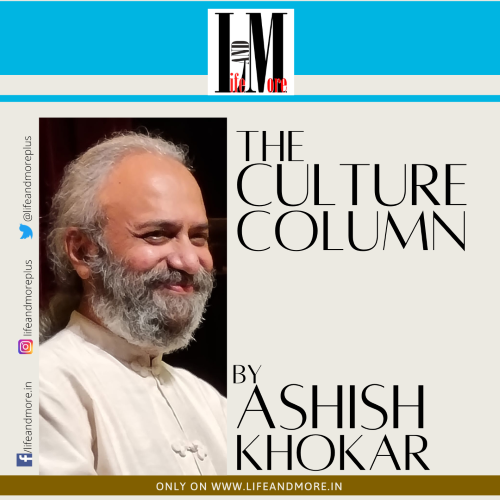
In last column, I had focused on symbols in Indian culture. What is India’s one symbol that is pan Indian. It is Nataraja now. No wonder when the mandarins of ministry of culture thought what to put in front of spaceship called Bharat Mandapam they first thought of some sculpture. Then the idea of pancha dhatu (five metals) Nataraja came about and then the work started. A race against time but when gods ordain, who are we humans not to deliver?
Dr Padma Subrahmanyam
The whole feat was done in under 6 months and dedicated team at every level was involved to bring it to Delhi. The secretary culture Govind Mohan shared this story with all on a Sunday morning focus on Nataraja organised by IGNCA at Ambedkar Bhavan. Dr Padma Subrahmanyam gave an academic account of the process while diva Sonal Mansingh gave philosophical insights.
Anand Coomarswamy
Anand Coomarswamy memorial lecture organised by Dr Sanjay Jha of the Archives and Conservation department of IGNCA under Achal Pandya, had Parul Dave Mukherjee speak on the subject in the light of new positioning of Indian history. Sanskrit as a language should be quoted and used only if one has total command. That goes for any language, actually. The IGNCA is the only multi-disciplinary organisation that can undertake any work today which the Culture Ministry also wants done. IGNCA head is the dynamic Dr Sachidanand Joshi, a man for all seasons. Be it organising and supervising the beautification of the new Parliament building or commissioning and bringing a 27-feet Nataraja from Swamimalai to space ship look alike Bharat Mandapam for G20 meet. Costing Rs 10 crores, this majestic piece of art actually helps centre the building and as Dr Padma Subrahmanyam said in her address, gives good vastu to Delhi. Me thinks Delhi needs tens of such more murtis! It is the most polluted city of India in many ways and in dire need of purification!
Saswati Sen with an artwork by Pandit Birju Maharaj
Pure joy one got seeing Pandit Birju Maharaj paintings. Innocent, child-like and even mischievous. He was so even in real life, a natkhat Gopal. His ace disciple Saswati Sen put it together and showcased many of his works, among which the most unusual was one on Navarasa. It has symbols and for hasya it had a bald head with comb on side! Such subtle humour. The exhibition was inaugurated by diva Sonal Mansingh, MP and trustee of IGNCA. She is active and informs now all on what schemes the Culture Ministry gives through interactive session on the net, thereby fulfilling her role as an MP that connects cultural field with policy makers and grant givers. She even forwards important news not picked my mainstream media like the passing away of Prof BB Lal. It went unnoticed. He single-handedly debunked many theories that the epics were not mere tales but actual history. He helped reinstate many lost causes, including those of Ayodhya. 100+ years he lived and no one valued it?
Do we value anything anymore? Millennials only bother about themselves. They are so busy on social media that they are living in a bubble and fool’s paradise that the 2k followers they have might actually translate into one or two real friends? One of India’s most corrupt PR agent palming off as a dance critic – who died in Covid times – didnt have four people to carry him to his funeral pyre. He was left alone – burning – this was his fate. Do these millennials have any clue to the work and worth of seniors, those not in social media but still with us?
Seeing works of two nanogerians – Kishen Khanna at Triveni and Shanno Khurana at home – made it meaningful to revisit both family friends. Both are also like some of us – children of Partition. Those of our families which have suffered India’s biggest holocaust – the Partition of Punjab and Bengal – know what suffering, displacement and dislocation is. Beauty is those who have no link with it are increasingly in public space as spokespersons! Delhi at its fake best.
Naman Ahuja
The daughter of Kishen Khanna, Rasika learnt Bharatnatyam from my mother in initial years. His bright coloured exhibition at Triveni was happy making. Shanno Khurana continues to sit and muse on music and an age gone by. An academic musician, she has also written two books on music and a PhD! Her grandsons Naman Ahuja is a distinguished academician trained under BN Goswamy no less, now at JNU heading the Arts and Aesthetics School and Sukhad flies high with Indigo. Her daughter Payal is a bright, maverick interior designer, fabrics and furniture and all. Naman Ahuja has done splendid exhibitions in past and currently the recompiled and revived Marg editions, are of high quality. A collector’s item, each.
When a child is named Aakash, little would such parents realise that one day he just might touch the sky. And he did – with his two works Echoes and Constellation – presented in open air, at a pretty (Sundar) nursery. Kiran Nadar Museum of Art has started to undertake events in performing arts too, as Kiran Nadar said in her brief introduction. Bharatanatyam dancer Aditi Jaitly, who has joined Kiran Nadar Museum as senior curator for performing arts, conducted the evening with elan and finesse, just the right amount of respect and regard for both the art and the artiste. Aditi Mangaldas too was present as choreographer of Echoes, for which music was done by Shubha Mudgal and Aneesh Pradhan. Shubha’s voice added power to the sheen of Aakash’s dance. Costume by Digvijay Singh suited the production and the dancer. He was performing in India after 12 years, so many were seeing him for the first time.
It was bold and courageous of him to come to epic-centre of Kathak that’s Delhi and dance the longish work Echoes based on Kathak language to an audience that had many Kathak senior dancers like Aditi Mangaldas, Rani Khanum, Sharmistha Mukherjee, Jayashri and youngsters like Rachna Yadav, Gauri Diwakar, Dhiren something, Vishwadeep Sharma. The second offering was Constellation with bulbs and all – which are props – and bounce and dance as effortlessly as Aakash does. The mobile or flexible bulbs are well-controlled by lights designer and glow and flow with the touch of flip of Aakash’s hands. His movements are sharp and agile. In the end, the rotation of a lit bulb at great speed is surreal and needs great practice to rotate in hand and increase speed, while dancing. One wrong move and the whole motion is ruined, stalled or its effect, destroyed. Practice until you are perfect must be Aakash Odedra ‘s motto and he showed it.
Akash Obedra
I had seen this work some years ago in Italy in an old opera house and to see it in the open now was a new experience. There’s was surreal air about it, despite the overall humidity of an unusual sultry October evening in Delhi. The park setting also did not help. The organisers had hoped there’d be fair winds blowing their way or at least a cool breeze. Without fans (on the sides at least), the audiences suffered and sweated much and I saw make-up running down some cheeks. Even wigs. One beauty with false eye-lashes had wiped her face so often during the long waiting periods that her eye lash had moved inches down the cheek to become a quasi moustache !
Odedra said he had never ever performed in the open, so it was a new experience for him – he shared this in the end in his thank you note. He was humble and eager to please or win the affection of Delhi audiences. He perhaps knows Delhi decides in more ways than one. Patronage and power lie here. The audience reflected that too. High end. Some of Delhi’s top names were there. I won’t name them!
Aakash has two things working for him: A perfectly tuned body which was totally centred too. What does that mean? It means someone who has reached a point in art where he is focused and calm; at peace with his work and his worth. He knows where he stands. Secondly, his use of routine Kathak accoutrements like chakra and tatkar translate into magical space not just a routine act. He develops each languorously then filigrees it with details. There’s nothing half-done in his dance. Everything is well etched and well finished.
Add a team of talents that do lights, hang his props (one does wonder, without technology and props how the same dancing would look?), even take it down and pack properly and then a manager who introduces him to those who matter and let him mix and mingle with the hoi polloi or the gushing fans – all go to prove that it is a well-run dance company. Having interacted with him in Bergamo, Italy four summers ago, I learnt what struggles he had and how his career in dance shaped up. Earlier, over a lunch with his mentor Akram Khan 10 years ago in London, I also learnt how Akash was chosen over many others for mentoring. Small drops make an ocean.
Akash Odedra looks small off-stage but on stage he is commanding and a giant talent. His dance is deep but not heavy; heady but not saccharined. Aakash Odedra’s Delhi show showed why he is indeed a budding master of the medium.
All in all, there’s energy in air. When sky meets the earth the result is magic that’s memorable art. Indian culture is so rich that a lifetime isn’t enough to partake it fully. We are blessed to get a sampling. It makes our lives, richer.
Gold standard of art writing, documentation and dance history comes from sustained work in the field for almost 50 years; 47 books, 5000 articles, 3 monthly columns for decades and one yearbook -attenDance. Add cultural administration from 1980s onwards; teaching at universities dance modules, 85 such for UGC E-PATHSHALA and advisor to NEEMRANA group and IGNCA. On board of several institutions, organisations and NGOs make him a truly cultural icon of young India that bridges tradition with old Bharat. Ashish Khokar truly loves and serves Indian arts and culture selflessly.


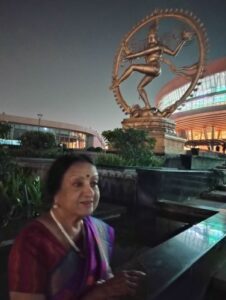
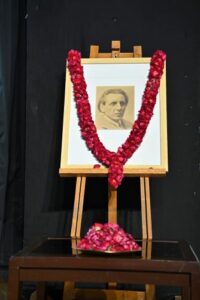
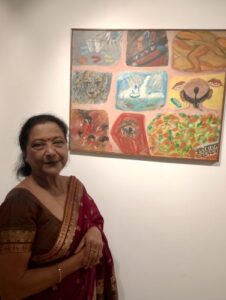
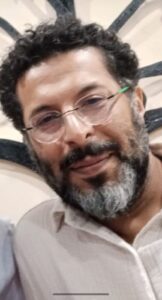
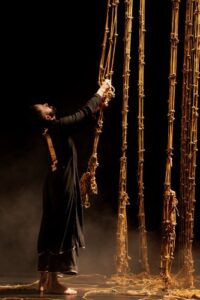

2 Comments
Such lovely, top-notch writing, Sir! Privileged to read your articles. You have such amazing, in-depth knowledge of, and experience in, your subject.
Your love of the subject of your writings is so evident!
Reading through your lines was like watching a graceful dance performance. Longing to see the performance of Aakash Odedra. Got to know only now, why Nataraja was placed in front of Bharat Mandapam. Keep filling our heart with your eloquent writing.